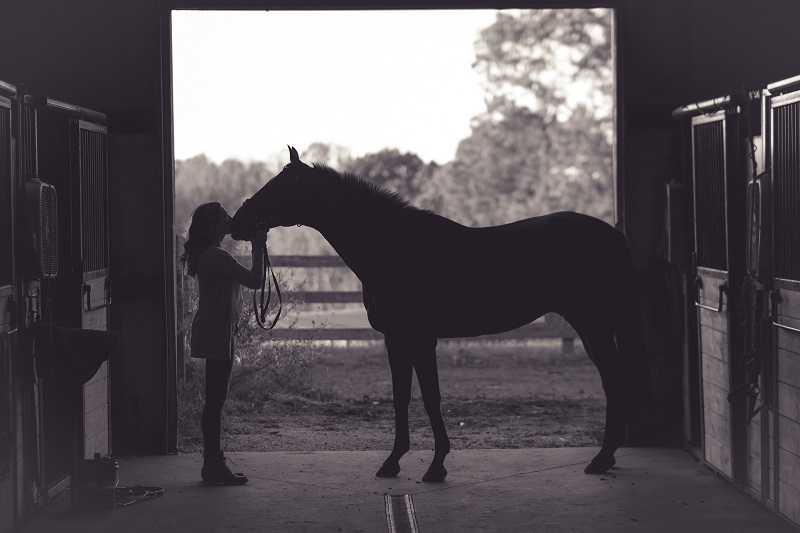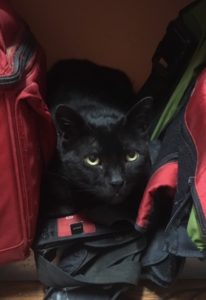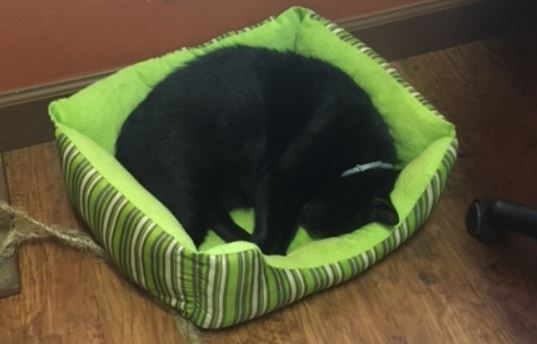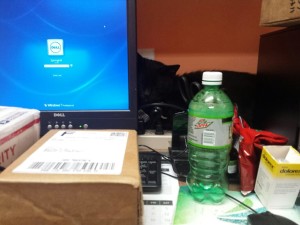
Horse Shows and Drug Rules
Tuesdays with Tony
This isn’t going to be a blog about what you think it’s going to be about. I like to keep it interesting because I’m a cat, and that’s how we roll. Today I’m going to talk about the guidelines that exist for using medications at horse shows, and some things you humans should think about when using medications.
Yes, You Can
The number one comment I hear from the front desk is, I can’t give any medication. I have a horse show coming up. Yeah, I know you thought I was going to say, What do you have that doesn’t test? My Docs are definitely not down with that kind of thinking, so I don’t hear a lot of that around here. However, if you say this to one of my Docs, they’re likely to reply that you don’t need to go to that horse show if this is your question.
Back to the real topic here. Most organizations have guidelines in place for using appropriate, safe amounts of medications for horses showing. These guidelines allow the use of pain relievers like bute, Banamine, or Equioxx, and some other medications like dexamethasone. The rules also allow for veterinarians to treat minor emergencies like simple eye injuries, small lacerations, or mild colics while still allowing the horse to compete, IF the veterinarian feels that’s okay. Good drug rules work hard to ensure the welfare of the horse first and foremost.
It’s important to remember what a competition involves for horses. There’s travel to the venue, sleeping in a strange bed, potentially lights on all night long, likely a high workload, and managing a nervous human, to name just a few. I know many of you humans take an Advil or two at a horse show. That’s reasonable. These guidelines allow your horse to have that same benefit.

Know Your Rules
The best way to follow the rules is to know the rules. Start by finding out the organization you will be showing under. Some common examples are USEF, AQHA, AERC, and FEI. No two organizations are the same, even the ones that do essentially the same events. For example, NSBA and AQHA rules have some slight differences. There can also be differences based on level of competition. USEF and FEI rules may be in effect at the same horse show for horses doing different levels. You may be showing preliminary level eventing, but your barn mate may be doing the 1*. You guys are going to have very, very different drug rules. In a moment I will explain why that’s a big deal.
Be sure you have a firm understanding of the rules you will be competing under. If you aren’t sure, reach out to my Docs. They can often help you interpret the sometimes confusing language of drug rules. Discuss things with your trainer or other professionals who’ve been competing for a while. This will all help you get an understanding of what you can and can’t do.
Happy Horses
Let’s go over some scenarios to help you understand how to approach the use of medications at a horse show.
Scenario 1: Your horse, Dobbin, is 18 years old and has been there, done that and is now teaching you, novice human, how to do the things you want to do. Dobbin has some minor aches and pains typical of the age, but is well managed at home with lots of turnout and a good warm up. You’re at your very first away show, which means Dobbin is in a stall for most of the weekend without his usual nighttime turnout. The showgrounds also have a lot of hard surfaces like concrete and asphalt.
This is an appropriate place to add in NSAIDs like bute, Banamine, or Equioxx. Once again, talk to my Docs about the best way to do this. My Docs will help you decide which one is the right answer for Dobbins, typically with some trials long before the horse show. My Docs will also help you determine the best time to start and stop medications before and after the horse show. Most of those drug rules I talked about put limits on how long medications can be given. Bute is typically 5 days in a row, for example. My Docs will also help you come up with a plan to manage Dobbin’s temporary environment with non-medical things like walks and stretches. Drugs aren’t the magic answer, they are a support system.
Scenario 2: Your horse, Flicka, is 4 years old and at her first horse show EVER, and it’s a scary, terrifying place, and she might lose her mind at any moment. She quit eating altogether this morning and now you’re pretty sure she’s colicky.
This is where what I like to call the “vet clause” comes in. Many of the event rules give veterinarians the ability to treat Flicka for her colic, while still allowing you to compete with a short “time out.” Typically that time out is 24 hours. My Docs only authorize return to showing in cases similar to this where we have a horse with a relatively minor problem. They aren’t going to sign off on a major colic continuing to show. However, we all know horses are horses and they do stupid things. Similar to the Dobbins scenario, my Docs would also help you formulate a non-drug plan to help Flicka handle the stress. Long walks, frequent small meals, and, unfortunately, the thing no human is good at, patience will likely be the prescription here.
The Big Dog: FEI
I’m going to end with a bit about FEI rules. FEI rules are tough and have zero give. A lot of this is because these are the rules that govern the Olympics, and the Olympic Committee is serious about drug use. If you are going to be showing under FEI rules, please, please, please for the love of all that is cat schedule a chat with my Docs.

There are a whole lot of things you can’t do even 14 days out from a competition. And their drug testing is incredibly sensitive. Residual bute in a feed bucket which is then used to feed an FEI horse can cause a positive drug test. This means you have to be careful with even the other horses in the barn. No sharing anything! Many supplements, especially if they contain herbs, can cause positive tests. Moral of the story here: ask lots of questions, and don’t assume anything is legal. Also, my Docs can help you navigate the maze of FEI rules and passports (but don’t get me started on passports).
I know you guys hear the word ‘drugs’ and think bad. However, the appropriate use of some medications can make the competition world a better place for horses. Schedule a talk with my Docs to go over your goals, hopes, dreams, and fears, and they can help you come up with a plan!
Until next week,
~Tony
P.S. I just scratched the surface on this. If you want a deep dive, go listen to the podcast episode the humans did on this topic. It will clog your brain up with knowledge. You can find all their episodes over on the Podcast Page, or you can subscribe to Straight from the Horse Doctor’s Mouth wherever you get your podcasts. Speaking of subscribing, you should scroll down to the purple box and subscribe to my blog before you go listen to that podcast. Yes, that’s a good human.
Tuesdays with Tony is the official blog of Tony the Clinic Cat at Springhill Equine Veterinary Clinic in Newberry, Florida. If you liked this blog, please subscribe below, and share it with your friends on social media! For more information, please call us at (352) 472-1620, visit our website at SpringhillEquine.com, or follow us on Facebook!
[jetpack_subscription_form title="Subscribe to Whinny's Wisdoms"]




 Horses cost a lot of money. Stuff for horses costs a lot of money. Just because that stuff costs a lot of money, however, doesn’t mean it helps. I’m picking on all sorts of things here, but in particular stem cells, and other similar really expensive things to use on your horse when they hurt themselves. Much like OsPhos, there are very good reasons to inject these expensive things into your horse, but they aren’t a magic cure-all. In fact, most research has shown that a good rehab program is more important for tendon and ligament injuries than anything else! Good rehab programs require patience though, and you guys aren’t so good at that.
Horses cost a lot of money. Stuff for horses costs a lot of money. Just because that stuff costs a lot of money, however, doesn’t mean it helps. I’m picking on all sorts of things here, but in particular stem cells, and other similar really expensive things to use on your horse when they hurt themselves. Much like OsPhos, there are very good reasons to inject these expensive things into your horse, but they aren’t a magic cure-all. In fact, most research has shown that a good rehab program is more important for tendon and ligament injuries than anything else! Good rehab programs require patience though, and you guys aren’t so good at that.





